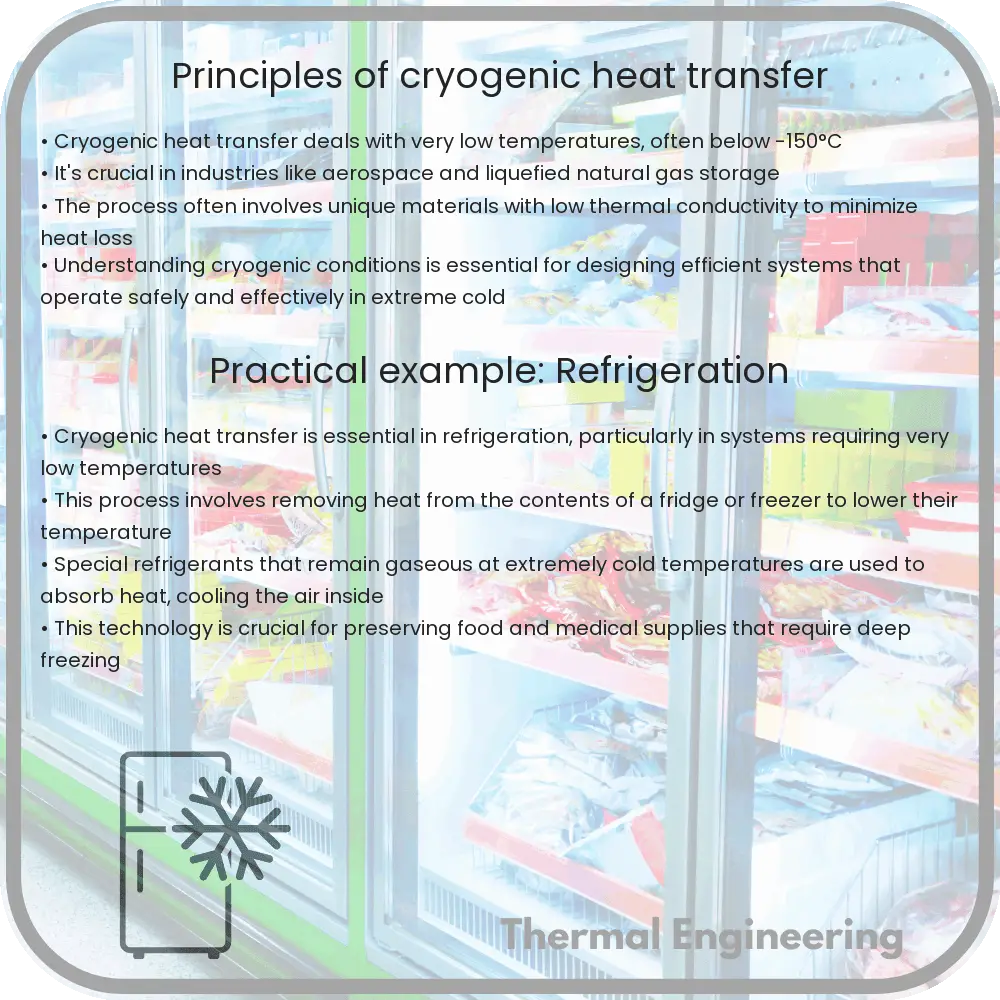Learn about cryogenic heat transfer, the study of how heat moves at extremely low temperatures crucial for modern engineering and technology.

Understanding Cryogenic Heat Transfer
Cryogenic heat transfer is a fundamental aspect of engineering that deals with the behavior of materials and thermal energy at very low temperatures, typically below -150 degrees Celsius (-238 degrees Fahrenheit). This field is crucial in various applications such as in the preservation of biological materials, superconducting magnets, and space exploration. In this article, we will explore the basic principles of cryogenic heat transfer, focusing on conduction, convection, and radiation, which are key mechanisms through which heat is transferred in cryogenic environments.
Conduction in Cryogenics
Conduction is the transfer of heat through a solid medium without any physical movement of the material. In cryogenics, the conduction properties of materials significantly change as the temperature decreases. Generally, materials become better thermal conductors at lower temperatures. The rate of heat transfer by conduction can be described by Fourier’s law:
q = -k * A * (dT/dx)
- q is the heat transfer per unit time,
- k is the thermal conductivity of the material,
- A is the cross-sectional area through which heat is being transferred,
- dT/dx is the temperature gradient.
For example, materials like copper and silver, which are already good conductors at room temperature, exhibit even higher conductivities at cryogenic temperatures, making them ideal for applications like cooling systems in space technology.
Convection in Cryogenics
Convection involves the transfer of heat through a fluid (which can be a liquid or gas) that is caused by molecular motion when the fluid is heated. In cryogenic systems, convection can occur in cryogens like liquid nitrogen or helium. The effectiveness of convective heat transfer is influenced by the properties of the fluid, such as viscosity and thermal conductivity, which also change at low temperatures. The convective heat transfer can be expressed by Newton’s law of cooling:
q = h * A * (Ts – T∞)
- q is the heat transfer per unit time,
- h is the convective heat transfer coefficient,
- A is the area through which heat is being transferred,
- Ts is the surface temperature,
- T∞ is the fluid temperature far from the surface.
The control of convection is critical in preventing the rapid vaporization of cryogenic fluids, which can lead to inefficiencies and safety risks in systems such as cryogenic fuel tanks.
Radiation in Cryogenics
Radiation is the transfer of heat in the form of electromagnetic waves and does not require a medium. This form of heat transfer becomes significant in cryogenic temperatures, especially in vacuum environments such as space. The Stefan-Boltzmann law, which describes this phenomenon, is given by:
q = ε * σ * A * (T4 – T∞4)
- q is the heat transfer per unit time,
- ε is the emissivity of the material,
- σ is the Stefan-Boltzmann constant,
- A is the area through which heat is being transferred,
- T is the temperature of the radiating surface,
- T∞ is the ambient temperature.
Materials used in cryogenic environments often have low emissivity to minimize radiative heat loss, which is critical in maintaining the integrity and efficiency of cryogenic systems.
Conclusion
Cryogenic heat transfer is an intricate field that plays a vital role in modern technology and scientific research. Understanding the principles of conduction, convection, and radiation at low temperatures helps engineers design more efficient and effective cryogenic systems. Whether it’s in medical storage systems, spacecraft, or superconducting devices, the principles of cryogenic heat transfer are fundamental to achieving desired outcomes in various high-tech fields.
As the application of cryogenic technologies expands, the understanding and manipulation of these heat transfer principles will continue to be a crucial aspect of innovation and development in cold-environment engineering.